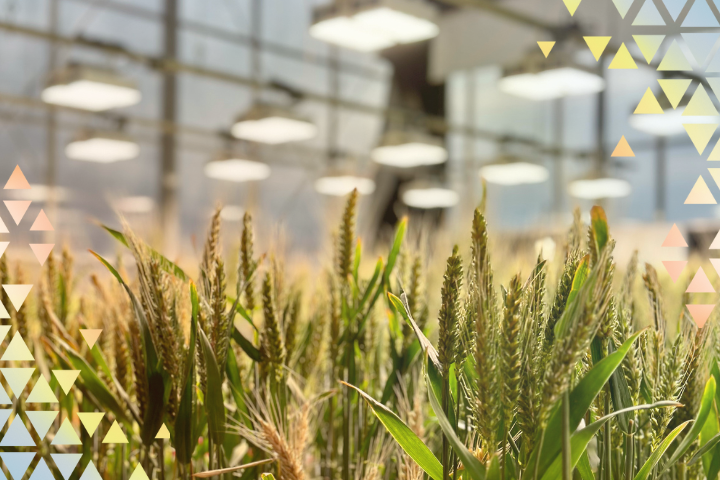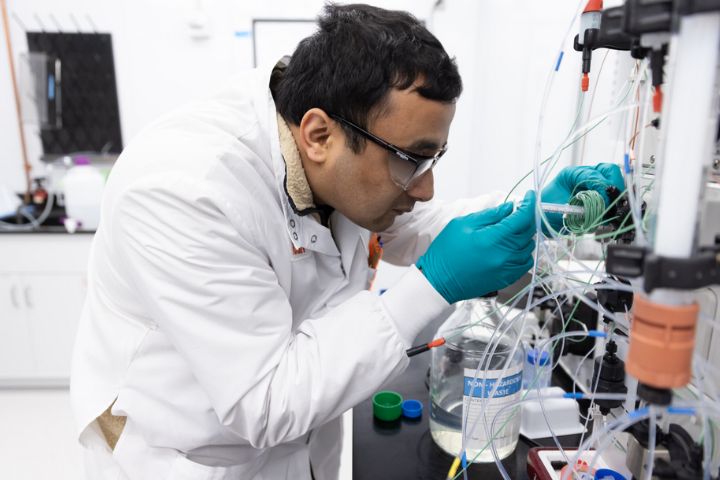Q&A with Inari’s Ponsi Trivisvavet and InterGrain’s Tress Walmsley
In February 2022, Inari and leading Australian cereal breeding company InterGrain announced a collaboration to bring step-change yield improvements to one of the world’s most critical food crops – wheat.
To mark the two-year anniversary of this news and reflect on the progress already made, our companies’ CEOs – Ponsi Trivisvavet and Tress Walmsley – joined together for a broad-ranging discussion on the power of gene editing and how it can help address some of our largest global challenges.
Q: On a global scale, what place do new breeding techniques such as gene editing have in the agriculture industry?
Ponsi: If you stop to think about it, agriculture is truly a remarkable success story. For thousands of years, plant breeding has enabled humanity to enhance yields, protect harvests and fine-tune the quality of crops from seed to storage. This incredible work continues today, with sophisticated breeding operations such as InterGrain’s leading the way.
The power of new breeding techniques is that, for the first time, we can now exponentially accelerate natural breeding outcomes that address food system sustainability – helping to ensure food security for a rapidly growing global population, better caring for our planet with higher-yielding, game-changing seeds that require fewer inputs, and improving farmer well-being through economically sustainable solutions.
Tress: Agriculture and, importantly, the world need technologies like gene editing. We’re facing some large global challenges like food security, a growing population, sustainability, and climate change. Without gene editing, agriculture would be missing a huge opportunity to make a swift contribution to solving global challenges.

Ponsi and Tress at the AgriFutures evokeAG 2024 conference in Perth, Australia.
Q: Tress – based on your unique perspective, what type of impact can gene editing have in Australia specifically?
Tress: InterGrain’s core customer is the Australian farmer, and they’re very focused on making sure they’re competitive in the international market. In the longer term, that means they’re going to have to deal with a changing environment.
That’s why gene editing is a really powerful tool. As a plant breeder, we have four levers to pull: selection intensity, selection accuracy, genetic diversity, and speed. Gene editing is important because it impacts all four levers, allowing plant breeders to make some very rapid changes.
Q: Inari’s approach to gene editing is unique. Ponsi, can you explain how?
Ponsi: Plants’ genomes are incredibly complex – much more so than humans. For example, the wheat genome is five times bigger than the human genome. Meanwhile, many of the products we are working to develop at Inari, such as step-change yield increases, are driven not by one or two genes, but by a vast network in which many of these genes work together.
That’s where the power of our multiplex gene editing toolbox comes in, enabling us to execute a variety of edits and edit types to multiple genes, all at the same time. By mixing and matching gene editing tools, we can “knock out” – or turn off – genes, turn gene expression “up” or “down,” and swap out target genes. Guided by our AI-powered predictive design capabilities, these tools are helping us deliver nature-positive outcomes with more precision in far less time and with far fewer resources.
Q: Individually, Inari and InterGrain are already driving significant transformation in the agriculture industry. But what is the potential impact when these two companies collaborate?
Ponsi: InterGrain is an ideal collaborator for us because we share so many of the same values and objectives. Together, we’re focused on transforming wheat – one of the crops most responsible for global food security. We have an ambitious product target to increase the crop’s yields by 15% without increasing the need for water or fertilizer, far surpassing the average annual global yield increase of about 1%.
Tress: Seed is the foundation of grain farming. I’m always surprised when it’s left out of the discussion around technology solutions for solving climate sustainability. Gene editing gives us the power to shift that framework and put seed technology front and center, bringing a better future product for farmers and a solution for the global challenges we face. It’s wonderful to work with a company like Inari that supports nature-positive agriculture from the very foundation of the food system – seeds.
RELATED POSTS
Three Ways Gene Editing Supports Biodiversity
Genetic diversity in plants is the foundation of resilience, productivity, and adaptability. It enables crops to withstand environmental pressures, resist diseases, and thrive in varying climates, the result of millennia…
Inari’s Labs Achieve ‘My Green Lab’ Certification
We have a deep commitment at Inari to food system sustainability, which in addition to prioritizing food security and improved farmer well-being puts a focus on better caring for our…
An October Reflection on Food System Sustainability
By Jamie SaxonHead of Sustainability – Harvest season is in full swing in the U.S., a time of year that’s equal parts exciting, nerve-wracking and busy for farmers as they…


